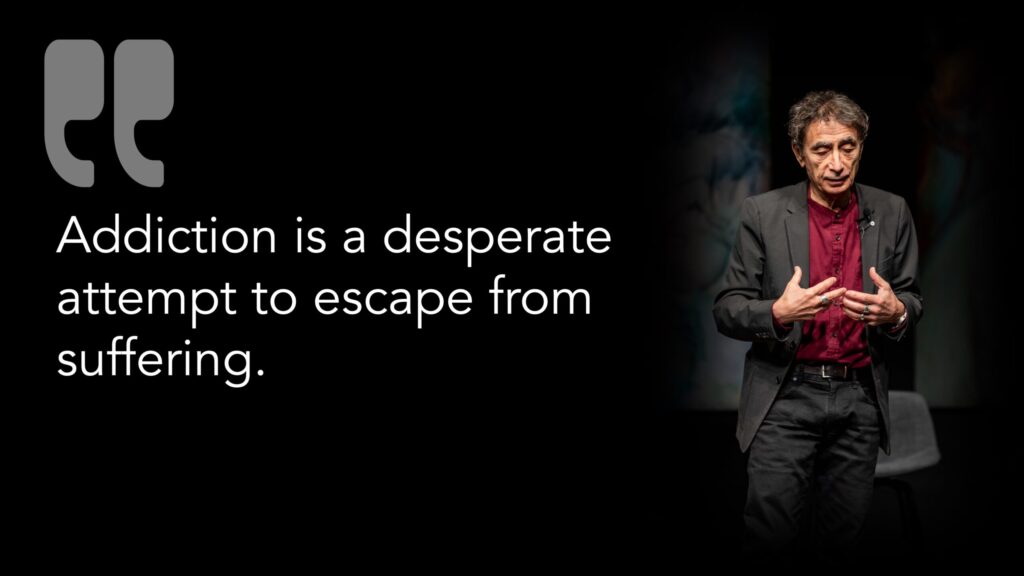A New Perspective on Addiction
Gabor’s research and his experience as a doctor has shown him that addiction is not a brain disease. It is not genetic, though we may have genetic traits that increase our risk for addiction. It isn’t a choice (that’s the one that so many people have difficulty understanding.)
So, what is it? Gabor sees addiction as complex set of behaviors and experiences. It gives us pleasure, relief, and cravings in the short term. In the long term, it’s something we can’t or aren’t ready to give up, in spite of the bad things that happen to us as a result of our behavior. But that’s just a definition. To better understand it, we have to look at why we’re seeking the pleasure or relief. And that ties back into shame. It’s a loop that feeds into itself.
What I mean by that is, the drug or behavior we’re using is something that gets us out of pain. Maybe the pain is boredom, or depression, or anxiety. Or a feeling that we aren’t loveable. Or a belief that no one will like us if they see “who we really are.” Or the pain of not being comfortable at a party with friends. Or perhaps the drug simply gives us joy and pleasure that we’re lacking.
All of those are reasonable things that just about everyone wants. But for those of us with addictions, our brains didn’t develop for us to be able to experience those things the way “normies” do, in large part because of the experiences we’ve had in our families of origin.
(And, just as a reminder, this isn’t anyone’s fault; as parents, we give our children the best we can, but our ability to do that is limited by our own wounds. And many of us, parents or children, aren’t really aware of the wounds we carry until we take the time to look for them.)
Someone who is addicted simply has a brain that’s wired differently, because it didn’t get the stimulation that cultivated healthy brain function. And for us, the first time we used alcohol, or a drug of abuse… it probably felt wonderful. It made us able to feel all the things that everyone else can feel all the time. When you think about it, who would want to turn that down? Who would want to stop doing that? Who wouldn’t want to do that compulsively?
Hopefully this is beginning to make a little more sense now. Those of us struggling with addiction, the things we use that make us feel good started out by making our brains feel things we’ve always wanted to be able to feel, but maybe we didn’t know it was possible. Because our brains didn’t develop with the brain chemical “factories” and “highways” (as we talked about in the last chapter). And that’s why it’s not a disease, and not a choice.
The genetics is more complicated to explain, but in brief, no gene has been found that is conclusively linked to addiction, and even if there were one, it would not explain the huge increase in addiction. Our brains simply don’t evolve that sort of change over a decade or two.
There are genes that, if present, make us more sensitive. People with high sensitivity are more likely to want to use something to numb those feelings. But that isn’t a cause of addiction; it’s, again, a pain, a discomfort that the behavior seeks to get away from.

